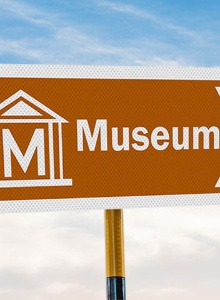The history of Santa Cruz de Tenerife stretches back just over four hundred years. In fact, in spite of Alonso Fernández de Lugo disembarking on this coast in 1494, the city did not begin to develop until a century later, with its port being the motor for growth which has made this city into the second most populated in the Canary archipelago. Around the port area is an urban route structured into boulevards and wide avenues marked out by a prominent legacy of modernist architecture. In the nerve centre of the city, near the sea is the Plaza de España, built in the middle of the XX c. over the former site of the San Cristóbal castle ( XVI c.) Facing the square is the Tenerife Island Council building, the seat of the main Tenerife municipal corporation. The building, an example of rationalist architecture, began to be built in the Neoclassic style in the mid 1930s under the direction of the architect Marrero Regalado. Inside, its rooms stand out due to them housing a series of mural paintings by the Canary painter José Aguiar.At this point several of the busiest streets and squares of the capital meet, such as the Plaza de la Candelaria. Located on the site of the former fortress of San Cristóbal, its centre is presided over by the monument to the Triumph of Candelaria, a Neoclassic style sculpture in Carrara marble and attributed to the Italian Pasquale Bocciardo. This enclave is overlooked by the eighteenth century façade of the la Carta palace, a splendid example of baroque with Neoclassic touches. Not far from this palace are other important examples of civil architecture. The Casino, built in the first thirty years of the XX century following the eclectic trends of the era, houses in its interior an important collection of works by Canary painters. The Guimerá Theatre has been existence for over one hundred and fifty years, after it was built on the site of the former convent of Santo Domingo. The theatre, which was started in 1849 and inaugurated in 1851, combines in its outward appearance a mixture of classicist and Romantic styles, while its interior is decorated with frescoes and gold leaf The oldest part of the city retains several religious monuments. The church of San Francisco, one of the most beautiful examples of Island baroque, consists of three naves and consruction began on it in the XVII c. The church of El Pilar, from the XVIII century, was built on the ruins of a former hermitage. Of major historical interest is the church of la Concepción, the basic construction of which dates from 1500. The church, initially called the church of la Santa Cruz, was restored in 1653, while the present tower was constructed in 1786. On the outside, the Canary colonial style construction stands out due to its wooden balcony typical of the island. The church has a Latin cross plan and is structured into five naves. Inside it houses an important collection of religious art. It is also worth mentioning the gothic image of the Virgen de la Consolación, and the Cross of the Conquest, brought to the island by the conquistador Fernández de Lugo, as well as various processional thrones.The city also has several green areas filled with exotic species of trees. García Sanabria Park houses an important Museum of Open Air Sculptures. This is an original enclave in which the works of contemporary artists are exhibited alongside palm trees and other tropical plant species. Here you can admire creations by Spanish and foreign artists such as José Guinovart, Óscar Domínguez, Joan Miró or Henry Moore. Another place you must visit is the Maritime Park, an area for relaxation designed by the Canary architect César Manrique and situated on the former commercial dock. In la Caleta de Negros, very near this complex, yoou can see the castle of San Juan, one of the best preserved castles on the island. Also known as the Black Castle, this circular defensive bastion was built in the first half of the XVII century, using blocks of volcanic stone for its construction. To enjoy the seaside, it is worth a visit to San Andrés, a neighbouring seaman's quarter located beside the beach of las Teresitas, with fine golden sands. Culture, gastronomy, and the outskirts The city of Santa Cruz de Tenerife is famous for its Carnival, one of the most spectacular in Spain. This fiesta, which has been declared of International Tourist Interest, is characterised by the spectacular costumes and the performances of the murgas (satirical singing groups), rondallas (musical groups) and comparsas (dance groups). There is a wide choice of hotels throughout the island, although it is advisable to book early for Carnival. The capital of Tenerife serves as a showcase for the typical gastronomy of the island. Pork is the base for preparing rancho (a typical stew). Also, it shares with the rest of the archipelago the famous papas arrugadas (potatoes boiled in their jackets) and mojos (spicy sauces). The sea provides fish such as jack mackerel, vieja sancochada (typical fish stew), sardines, mackerel, grouper, as well as various shellfish. Desserts include delights such as pastel de cabello de ángel (a dessert made from pumpkin) frangollo with honey (a typical dessert made from sweetcorn) or truchas de batatas con almendras (pastries filled with sweet potato paste and almonds) To accompany your meal, you can choose between any of the five Designation of Origin wines produced in Tenerife: Abona, Tacoronte-Acentejo, Valle de Güimar, Valle de la Orotava and Ycoden-Daute-Isora. Once you have finished your stroll around the city, a good option is to go on an excursion to discover the outskirts. A few kilometres from the capital is San Cristóbal de La Laguna, whose historic quarter has been declared World Heritage. The cathedral, the modernist Leal theatre and the church of la Concepción XVI c.) are worth a visit. One of its jewels is the Bishop's Palace (XVII c.), built in the baroque style with a beautiful interior courtyard. From the nature point of view, Tenerife is an island of contrasting landscapes. The extensive beaches in the south of the island give way in the north to lush vegetation. And in the centre of the island is Mount Teide which, with its 3,718 metres, is the highest point in Spain. This volcanic peak gives its name to the Teide National Park, a protected area which contains abundant endemic species of Canary flora and fauna. In the Park is also the Parador de las Cañadas del Teide.












